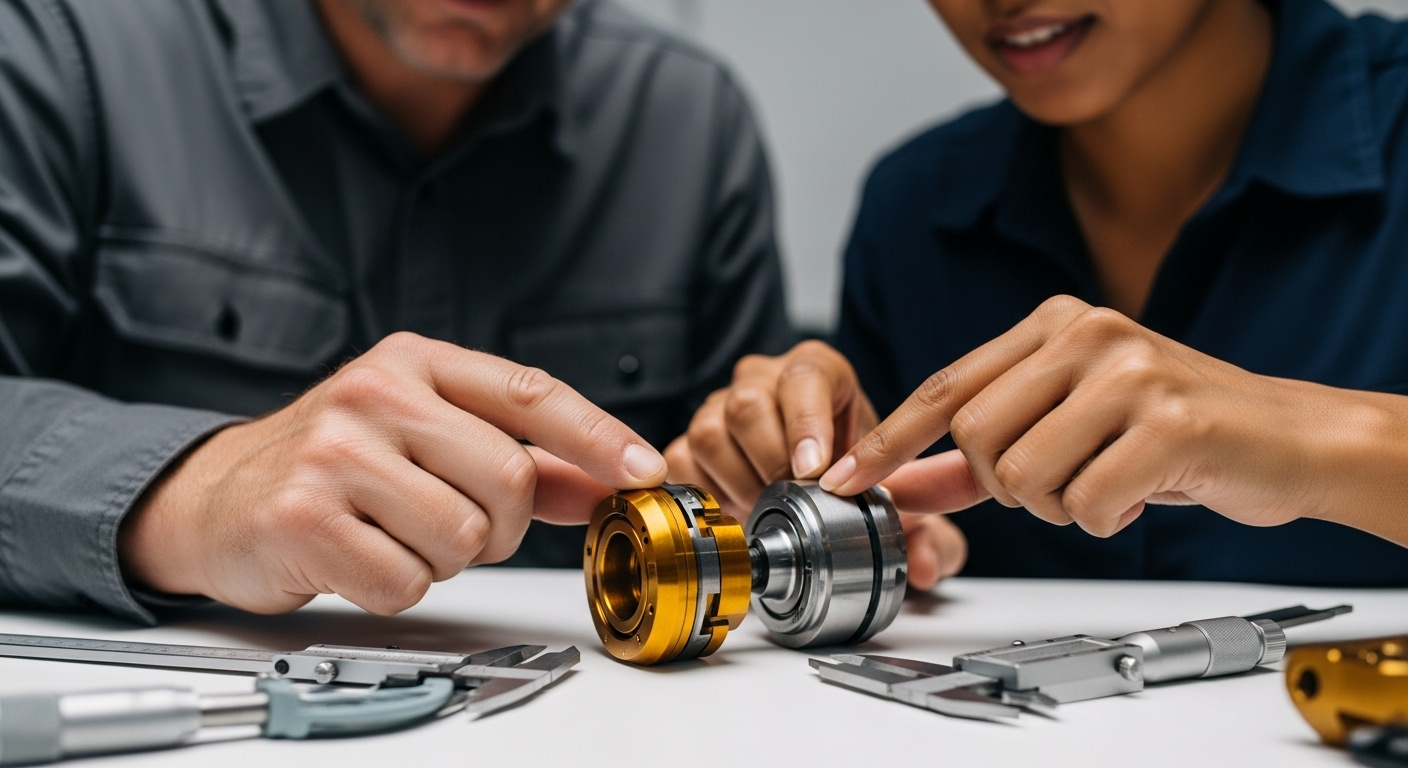Precision in Practice: The Critical Role of Engineering Drawings in Project Success
Technical Drawing: The Essential Blueprint for NZ Engineering & Manufacturing
Key Takeaways
- A technical drawing is more than a sketch; it's a universal language that provides all the necessary information for manufacturing, ensuring everyone from the designer to the fabricator is on the same page. The Drawing is the contract, if it isn’t on the drawing it doesn’t happen.
- Investing in professional CAD drawings significantly reduces risk by preventing costly rework, material waste, and project delays caused by inaccuracies.
- Precise engineering drawings are critical legal documents for proving compliance with New Zealand's rigorous safety and quality standards.
- Modern digital drawing management can drastically improve efficiency, with some organisations seeing up to a 45% reduction in document retrieval times.
- Effective revision control on drawings is essential for maintaining product integrity, especially when specifications for existing parts have been lost over time.
Every great innovation starts with an idea. A solution to a problem, a new machine, a better component. But how do you get that brilliant concept out of your head and onto the factory floor without it turning into a costly game of Chinese whispers? The answer lies in a discipline that is the bedrock of all modern production: the technical drawing .
In New Zealand's demanding engineering and manufacturing landscape, precision isn't just a goal; it's a requirement. A technical drawing is the single source of truth that guides a project from concept to completion. It’s the detailed, unambiguous instruction manual that ensures what you designed is exactly what gets built. The stakes are incredibly high. A recent Autodesk survey revealed that companies using BIM (Building Information Modeling), a process built on precise 3D CAD models and drawings, can achieve a 25% reduction in project lifecycle costs.
This isn't just about saving a few dollars; it's about fundamentally improving project viability. Furthermore, the move to digital systems has a massive impact on day-to-day operations. According to CADDIE, organizations implementing digital drawing management systems report a 45% reduction in document retrieval time , freeing up valuable engineering hours for innovation rather than administration.
This isn't just about lines on a page or a file on a server. It's about risk mitigation, compliance, and the very integrity of your project. Let's explore why treating the technical drawing process as a critical investment is the smartest decision any NZ business can make.

What is a Technical Drawing, Really? More Than Just a Picture
At its core, a technical drawing is a precise and detailed plan that communicates how something works or how it should be made. Unlike artistic drawings, which are open to interpretation, a technical drawing must be clear, concise, and universally understood by engineers, fabricators, and inspectors. It's a formal, structured language spoken through lines, symbols, and numbers.
Think of it this way: if you gave a builder a watercolour painting of a house, you'd get... something interesting. But if you give them a full set of architectural drawings, you'll get the house you actually designed. The same principle applies in mechanical engineering. These drawings act as a universal language, bridging the communication gap between different teams and making collaboration smoother. As experts at DraftSight note, with clear, standardized plans, projects are less prone to costly revisions or delays( https://blog.draftsight.com/2025/01/29/from-concept-to-creation-technical-drawing-insights ), leading to greater efficiency.
A complete engineering drawing will convey all the necessary information for manufacturing, including:
- Geometric Form: Using views like orthographic projection (top, front, side views) and isometric drawing to show the object's shape from all angles.
- Dimensions: The exact size of every feature, with a specified tolerance (the acceptable range of variation).
- Material Specifications: The type of material to be used, its grade, and any required heat treatment or finishing.
- Manufacturing Notes: Specific instructions for the machinist or fabricator, such as surface finish requirements or assembly steps. An assembly drawing, for example, shows how multiple parts fit together.
Modern technical drawings are created using sophisticated CAD (Computer-Aided Design) software like AutoCAD or SolidWorks, which allow for an incredible degree of precision in both 2D and 3D formats.

The High Cost of 'Good Enough': Why Precision is Non-Negotiable
Have you ever tried to save a little time or money by taking a shortcut, only for it to cost you far more in the long run? That's the risk you run when you compromise on the quality of your technical drawings. A single misplaced dimension, an incorrect tolerance, or a vague note can lead to a cascade of expensive problems:
- Wasted Materials: Parts manufactured to the wrong specifications are often destined for the scrap bin.
- Costly Rework: Time and labour are spent trying to fix mistakes that should have been caught on the drawing board.
- Project Delays: Waiting for corrected parts can bring your entire production schedule to a halt.
- Reputational Damage: Delivering a faulty product can damage trust with your clients.
This is where professional oversight becomes invaluable. A common issue we see is businesses that have components made years ago but have since lost the original plans. They need a replacement part, but without a definitive drawing, they're guessing. This is a recipe for disaster. That’s why a core part of our service is providing meticulous Drawing revision control . We can reverse-engineer a component, create a precise new CAD model and drawing, and manage its revision history. This ensures the correct supply of parts that are fit for purpose , removing the guesswork and guaranteeing that what you order is exactly what you need, every single time.
Navigating NZ Compliance: Your Drawing as a Legal Document
In New Zealand, an engineering drawing is more than just a production guide; it's often a critical piece of your compliance documentation. Meeting NZ's stringent standards for safety, quality, and environmental protection is non-negotiable. Your technical drawings are the primary evidence that you have done your due diligence and designed a product that is safe and fit for purpose.
Whether it's pressure vessels, lifting equipment, or structural components, the authorities will want to see the drawings. They will scrutinise the material choices, the specified tolerances, and the engineering principles applied. An incomplete or inaccurate drawing isn't just a production headache; it's a significant legal and financial liability.
This is a complex area where expertise is vital. At Nexus, we specialize in providing precise technical drawings and engineering expertise to ensure that your product meets New Zealand’s compliance standards. ( https://www.nexsed.co.nz/navigating-compliance-ensuring-your-product-meets-new-zealand-standards ).
We understand the codes and what inspectors are looking for. For instance, when we were tasked with designing a Worksafe compliant process tank, the technical drawings were the foundation of the entire project. They didn't just guide the fabricator; they formed the core of the documentation pack that proved its safety and compliance, ensuring the client was fully protected.
From Concept to Creation: The Technical Drawing Process in Action
So, how does an idea become a manufacturable reality? The journey relies on a structured technical drawing process that transforms abstract concepts into concrete instructions. It starts with a deep understanding of the project's goals, constraints, and requirements.
Using powerful 3D CAD tools, designers and engineers create a detailed digital model of the part or assembly. This 3D model is more than just a picture; it's a virtual prototype that can be tested, analysed, and refined before any metal is cut. This digital phase is where complex challenges are solved.
A perfect example from our portfolio is the design of surgical implants for veterinary use. This project required not only a high degree of precision but also complex surface modeling to ensure a perfect fit and function. The ability to create and refine these intricate shapes in a 3D CAD environment was crucial. From that master model, we generate a complete set of 2D manufacturing drawings. These detail drawings, with precise geometric dimensioning and tolerancing, provide the workshop with everything they need to produce the final, life-saving product. You can see how these complex projects come to life in our portfolio of real-world engineering challenges.
This process, moving from a 3D CAD model to detailed 2D working drawings, ensures nothing is left to chance. Every angle, every curve, and every dimension is defined, providing a clear path for CNC machines and skilled fabricators to follow.
Choosing the Right Partner for Your Engineering Drawings
Creating technical drawings that are accurate, compliant, and easy to interpret requires a specific skill set. It's a blend of technical knowledge, understanding of engineering practice, and expertise with advanced CAD software. While it might be tempting to handle this in-house to save on initial costs, partnering with a specialist mechanical design and drafting firm offers significant advantages.
A professional drafter or engineer brings:
- Expertise in Standards: Deep knowledge of drawing conventions, symbols, and the specific requirements of NZ compliance.
- Manufacturing Insight: An understanding of how parts are actually made, allowing them to create drawings that are practical and efficient for the workshop.
- Advanced Tool Proficiency: Mastery of CAD tools to create highly detailed and accurate 2D and 3D models.
- An Objective Eye: A fresh perspective that can often identify potential design flaws or opportunities for improvement before they become problems.
At Nexus Engineering, our focus is on providing these specialised services to New Zealand's manufacturing industry. We help businesses innovate effectively while avoiding the high costs of prototyping and production errors. Whether you need a full set of manufacturing drawings for a new product, revision control for existing parts, or compliance documentation for a critical piece of equipment, we have the expertise to deliver. While costs can vary based on project complexity, investing in professional technical drawing services is a direct investment in your project's success.
Don't let your next great idea be undermined by a poor plan. A precise, professional technical drawing is the strongest foundation you can build for quality, safety, and profitability. It’s the language of innovation, and we’re here to help you speak it fluently. If you're ready to turn your concept into a successful manufactured reality, let's talk about your project.





